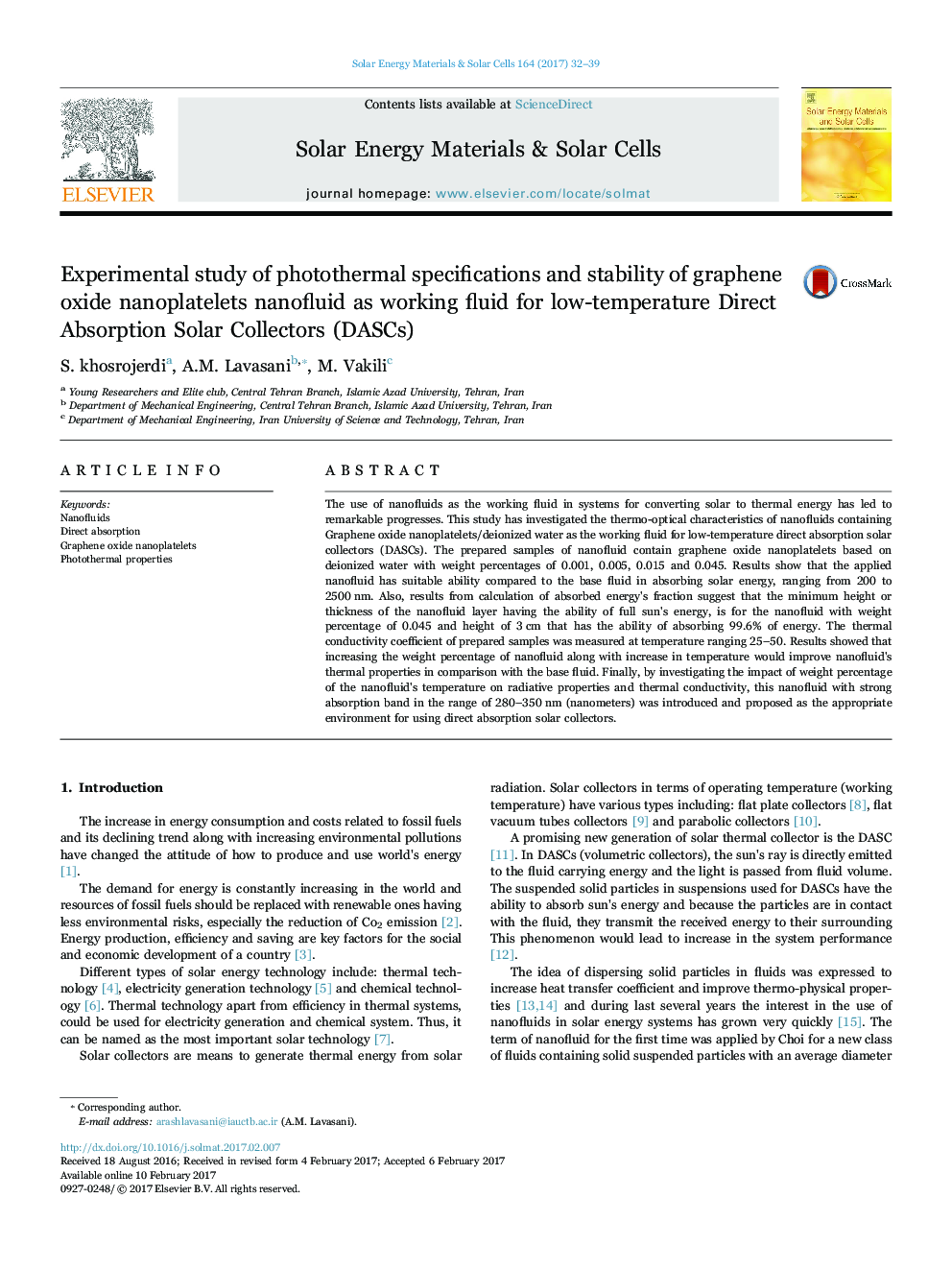| Article ID | Journal | Published Year | Pages | File Type |
|---|---|---|---|---|
| 6457096 | Solar Energy Materials and Solar Cells | 2017 | 8 Pages |
â¢Effects of nanoplatelets concentration and nanofluid height were investigated.â¢200 cc's sample of nanofluid has maintained its stability after 340 days.â¢Graphene oxide nanoplatelets nanofluid is introduced as suitable absorber environment.
The use of nanofluids as the working fluid in systems for converting solar to thermal energy has led to remarkable progresses. This study has investigated the thermo-optical characteristics of nanofluids containing Graphene oxide nanoplatelets/deionized water as the working fluid for low-temperature direct absorption solar collectors (DASCs). The prepared samples of nanofluid contain graphene oxide nanoplatelets based on deionized water with weight percentages of 0.001, 0.005, 0.015 and 0.045. Results show that the applied nanofluid has suitable ability compared to the base fluid in absorbing solar energy, ranging from 200 to 2500Â nm. Also, results from calculation of absorbed energy's fraction suggest that the minimum height or thickness of the nanofluid layer having the ability of full sun's energy, is for the nanofluid with weight percentage of 0.045 and height of 3Â cm that has the ability of absorbing 99.6% of energy. The thermal conductivity coefficient of prepared samples was measured at temperature ranging 25-50. Results showed that increasing the weight percentage of nanofluid along with increase in temperature would improve nanofluid's thermal properties in comparison with the base fluid. Finally, by investigating the impact of weight percentage of the nanofluid's temperature on radiative properties and thermal conductivity, this nanofluid with strong absorption band in the range of 280-350Â nm (nanometers) was introduced and proposed as the appropriate environment for using direct absorption solar collectors.
